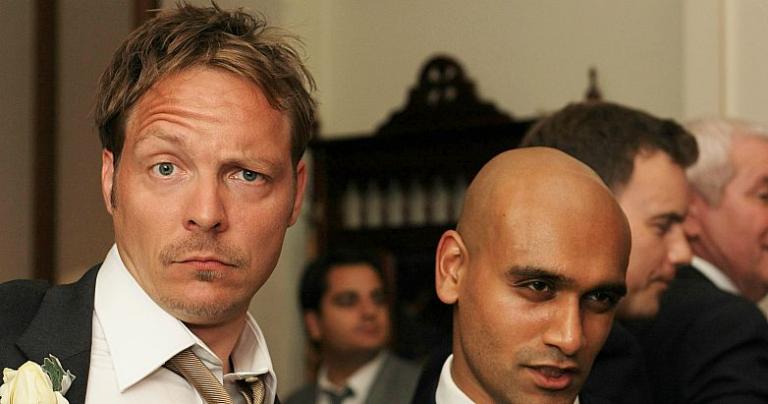“When I was at Brogan’s house, I kissed him,” five-year-old Sally told me recently.
“Okay. Where did you kiss him?” I asked, curious what sort of kiss she meant.
“On the back of the head, because he didn’t want me to so he was moving all around.”
“Wait a minute, now—”
“When we go over to Brogan’s house again, I will run and catch him and kiss him again!” Sally proclaimed excitedly.
“Sally, what should you do if someone doesn’t want you to kiss them?” I asked.
“Just get him real busy so he can’t notice and then kiss him!” she exclaimed.
—————
We recently attended a wedding. Both children—Sally and her little brother Bobby—completely threw themselves into dancing at the reception. Two-year-old Bobby latched onto a girl of about seven, a girl from a family we didn’t know. At first the girl humored Bobby, letting him hold her hands as they swayed back and forth, but eventually she got tired of it and went back to dancing solo. But Bobby was insistent. He wanted to dance with this girl. He followed her around the dance floor grabbing her hands and trying to make her dance with him. The adults on the dance floor and at tables nearby beamed at Bobby, remarking on “how cute” he was being.
After a little while, the girl left the floor for the bathroom. Bobby followed, and would have gone into the bathroom after her if I hadn’t been right on his heels. I had begun to pay closer attention to what was going on, because I began to see that Bobby was invading the girl’s personal space and making her profoundly uncomfortable (this should have been obvious to me immediately, I know). Once the girl left the bathroom I followed the two back to the dance floor. Bobby was hot on the girl’s heels once again, and I heard more comments about how sweet he was being.
Back on the dance floor, I made an effort to distract Bobby, to convince him to dance with me or with his sister, but he remained fixated on this girl. I held Bobby and talked to him, trying to explain to him that she didn’t want to dance with him, and that he needed to be okay with that and find someone else to dance with or dance solo. Yet every time I put him down or let go of his hand he went back to the girl. Finally I picked him up and removed him from the dance floor entirely. The little girl looked relieved, but a nearby adult laughed and shook her head. “He’s only two,” she said.
—————
Sally and Bobby are still children, and young ones at that. They’re nowhere near forming romantic relationships or having sex. But the patterns we set matter, even now, long before the teenage years.
Both of these stories are similar, in a way. In each, Sally and Bobby displayed a lack of respect for another child’s personal space and physical autonomy. In my experience, children aren’t born knowing not to push other children’s physical boundaries. This is something that must be taught. After my exchange with Sally, she and I had a very good talk about physical space and consent. I explained that she should not kiss another child unless that child is okay with it, and so forth. As for Bobby, well, he’s still small. I did try to explain to him about giving the little girl on the dance floor space, but ultimately I simply had to remove him from the situation.
Sally and Bobby aren’t the only children in either of these stories. Sally’s friend Brogan and the girl on the dance floor are learning things too. They are learning how they can expect others to treat them—and what the authorities in their lives will or won’t do to back them up. As Bobby invaded her personal space, the girl on the dance floor was surrounded by adults murmuring about how cute he was being. No one told her she should have a right to have her personal space respected. As for Brogan, I know too many adults who think a little girl finding a way to kiss the boy she likes regardless of his wishes is “cute,” and that may impact his ability to back up his “no.”
We need to think about the messages we send children. When they are still toddlers we need to teach them about personal space—that they need to respect others’ personal space, and that they can expect to have their need for personal space respected and backed up—and as they get bigger we need to teach them about consent.
See also my earlier article, Teaching Consent to Small Children.














